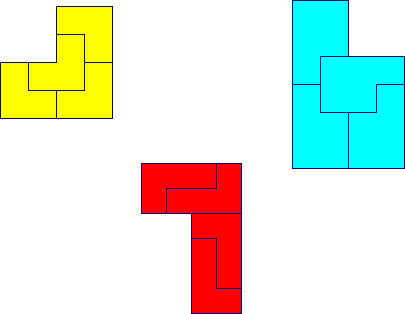Or search by topic
Number and algebra
Geometry and measure
Probability and statistics
Working mathematically
Advanced mathematics
For younger learners
Twice as Big?



- Problem
- Getting Started
- Student Solutions
- Teachers' Resources
We received several solutions to this problem - thank you to all of you who wrote in, including Ivy, Kelsie and William from Mason Middle School; Issy from Culford Prep and Jessica and Philip from CWBS. Here is the image that Jessica and Philip sent:

We also had suggestions about how to go about tackling the problem, for example by starting at the top and fitting shapes in, then gradually working down. Very good advice!
You may also like
Cutting Corners
Can you make the most extraordinary, the most amazing, the most unusual patterns/designs from these triangles which are made in a special way?
Cut and Make
Cut a square of paper into three pieces as shown. Now,can you use the 3 pieces to make a large triangle, a parallelogram and the square again?
Square to L
Find a way to cut a 4 by 4 square into only two pieces, then rejoin the two pieces to make an L shape 6 units high.

